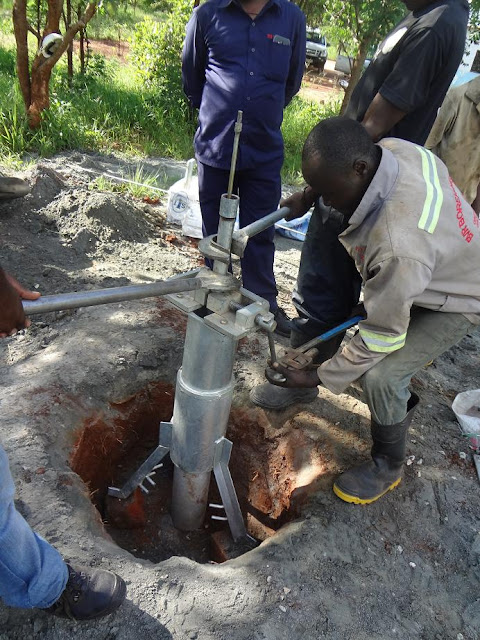We started on February 22 by setting the pedistal for the well over the casing that was installed when the borehole was drilled. We started at the Mulenje Community School.
Once the pedistal is in place the pump was attached to the rod and pipe.
The pump, rods and pipes are then put in to the pedistal and down into the casing.
For this well a total of 39 meters of rod and pipe were installed. That put the pump far enough below the static water level of 15 meters to maintain a constant flow of water from a hand pump. The rest of the pump assembly is now installed.
When that is complete we test the pump by drawing up a little water.
We did this for the next 3 boreholes and then they were ready for the aparon and drain. Number 5 borehole was not ready to be installed as the community had not paid their portion to the contractor. So we started the civil works in hopes that before we finished they could pay and we could complete their well. The civil work requires form work for the concrete. The contractor made a steel form for the apron and used timbers for the drain. Here the form work is set at the Mweetwa well and the village crew is spreading the concrete around the pedistal.
Here is what it looks like when it was finished at Nkhokoma.
Community number 5 paid most of their money so we decided to do the civil work first on that well. The community promised to have the rest of the money for the contractor when we set the pump. Doing the civil work first works better except water has to be hauled in to do the concrete instead of getting it form the well. By the time we got to #5 the crew had learned a few things about form work. Notice the spreaders and ties used to keep the forms straight.
After pouring the concrete on this one we set the pump the next day. Here is water coming from the 5th well. Happy Birthday, Marianne.
Last but not least is the hired transport to move the forms and materials from site to site.
It is finished.









